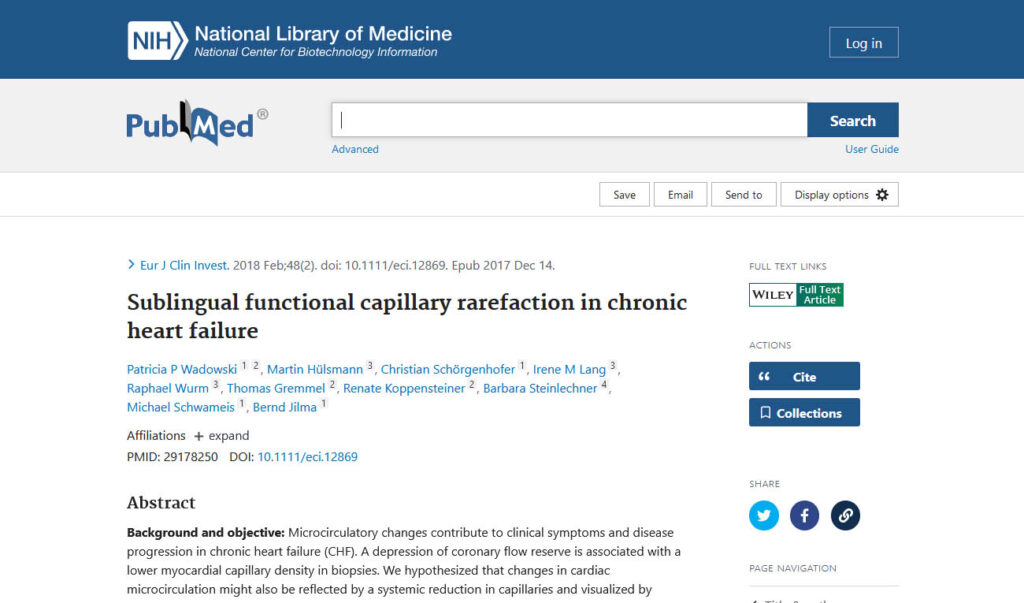Abstract
Background and objective: Microcirculatory changes contribute to clinical symptoms and disease progression in chronic heart failure (CHF). A depression of coronary flow reserve is associated with a lower myocardial capillary density in biopsies. We hypothesized that changes in cardiac microcirculation might also be reflected by a systemic reduction in capillaries and visualized by sublingual videomicroscopy. The aim was to study in vivo capillary density and glycocalyx dimensions in patients with CHF vs healthy controls.
Methods: Fifty patients with ischaemic and nonischaemic CHF and standard treatment were compared to 35 healthy age-matched subjects in a prospective cross-sectional study. Sublingual microcirculation was visualized using a sidestream darkfield videomicroscope. Functional and perfused total capillary densities were compared between patients and controls. A reduced glycocalyx thickness was measured by an increased perfused boundary region (PBR).
Results: Median functional and total perfused capillary densities were 30% and 45% lower in patients with CHF (both P < .001). Intake of oral vitamin K antagonists was associated with significantly lower capillary densities (P < .05), but not independent of NT-proBNP. Dimensions of the glycocalyx were marginally lower in CHF patients than in healthy controls (<7% difference). However, PBR correlated significantly with inflammation markers (fibrinogen: r = .58; C-reactive protein: r = .42), platelet counts (r = .36) and inversely with measures of liver/renal function such as bilirubin (r = -.38) or estimated glomerular filtration rate (r = -.34) in CHF patients.
Conclusion: CHF patients have got a markedly lower functional and total perfused capillary density in sublingual microvasculature when compared to controls, indicating a systemic decrease in microcirculation.


